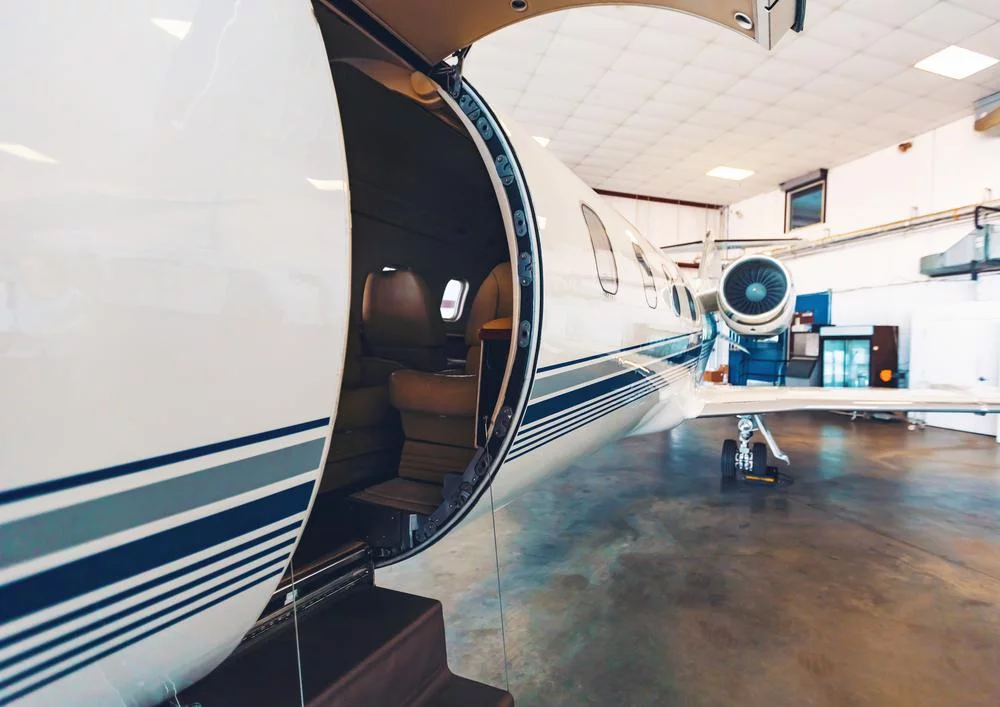Let’s face it. No one enjoys going to a crowded airport, waiting on passenger planes that may be delayed, and then dealing with the noise and frustration during the trip—even when you’re in first class. It is no wonder that more individuals are turning to private aviation with their own pilot and crew to get where they need to go faster and with less stress. If you are considering purchasing a private aircraft, such as a jet, you should know that financing it can be a complex process. There are several financing options available, though, so you should find one that suits your needs.
What is a Personal Aircraft?
First, let’s define what it means to have a personal aircraft as the size and maximum takeoff weight can impact your loan to some degree. There are generally three types of private jets, categorized based on their maximum takeoff weights:
- Light Jets: These are the smallest and most economical private jets with a maximum takeoff weight of up to 10,000 pounds. These can either be single- or double-engine, typically carry up to 4-6 passengers, and have a flight range of up to 1,500 miles. Examples of light jets include the Cessna Citation M2 and the Embraer Phenom 100.
- Midsize Jets: These are larger and more spacious than light jets with a maximum takeoff weight of up to 20,000 pounds. Domestic midsize or super midsize jets can typically carry up to 8-10 passengers and have a flight range of up to 3,000 miles. Examples of midsize jets include the Gulfstream G150 and the Bombardier Learjet 60XR.
- Heavy Jets: These are the largest and most luxurious private jets with a maximum takeoff weight of over 20,000 pounds. Heavy jets can typically carry up to 10-18 passengers and have a flight range of up to 7,000 miles. Examples of heavy jets include the Gulfstream G650 and the Bombardier Global 6000.
It’s important to note that the maximum takeoff weight and passenger capacity can vary depending on the specific model and configuration of the private jet.
Similar to financing a car or boat, the age, make, and model of the aircraft can influence your financing options and terms. Generally, lenders are more willing to finance a newer, small aircraft than one that is older with plenty of mileage.
The Best Ways to Finance a Personal Aircraft
Now that you know what qualifies as a private jet or personal aircraft, let’s take a look at the ways to finance your purchase.
Asset-Based Aircraft Loans
One of the most convenient options is an asset-based or secured aircraft loan. An asset-based loan means that, if you default on payments, the lender will be able to repossess your small aircraft. However, no further compensation would be required.
In an asset-based loan, the value of the asset being used as collateral (in this case, your aircraft) is a key factor in determining the loan amount and interest rate. In the case of an aircraft loan, the lender will typically require an appraisal of the aircraft to determine its current market value and may use this value to determine the loan amount and interest rate. Creditworthiness also plays a role in this.
One advantage of an aircraft loan is that you can typically secure a lower interest rate than you would when purchasing a private jet or other small aircraft with a personal loan or credit card. Similar to the financing you use when purchasing a boat, car, or house, this loan comes with a floating or fixed rate. An asset-based loan is generally structured to have short or long-term repayment options. You may be able to secure a short 30-month loan term or one as long as 120 months. In some cases, the loans have amortizations up to 240 months.
That said, if you go this route, you will be faced with very high interest rates, particularly with longer windows for repayment.
Credit-Based Aircraft Loans
For those with exceptional credit, you may select a credit-based loan instead of an asset-based loan. This kind of loan is where the lender determines your eligibility based on your creditworthiness. Creditworthiness is a measure of how likely you are to repay the loan on time and in full. It is determined based on several factors, including your credit score, income, debt-to-income ratio, employment history, and other financial information. Typically, a credit-based loan will cover about 90% of the aircraft’s assessed value. There have been some situations where individuals with outstanding credit are covered up to 100% of the personal aircraft’s value.
The interest rate you are offered on a credit-based loan depends on your creditworthiness; if you have a higher credit score, you typically qualify for lower interest rates.
Keep in mind that these kinds of loans can be secured or unsecured. Be sure to read the loan terms.
Aircraft Leases
Another option to finance a private jet is through a lease. With an aircraft lease, you make payments to use the aircraft for a set period of time, typically three to five years. At the end of the lease, you can choose to purchase the aircraft, return it to the lessor, or renew the lease. Aircraft leases can be a good option if you don’t want to commit to owning an aircraft long-term.
There are two kinds of aircraft leases: non-tax lease and tax leases.
A non-tax lease means that the lessee, you, owns the private jet for tax purposes. This is useful for when the value of the craft depreciates.
A tax lease, on the other hand, is when the lessor owns the private aircraft and, thus, is the one who reaps any tax benefits gained from depreciation. With tax leases, the interest rate is usually lower than with a non-tax lease.
Looking For an Aircraft Loan?
Now that you know the financing options available for personal aircraft—traditional loans, asset-based loans, leases, and personal loans—take some time to consider your budget, as well as the costs and terms of your options. If you are looking for a flexible asset-based or credit-based loan with the best rates available, contact Atlantic Horizon Capital today. Our loans are unlike those from a traditional bank, because we get you the most competitive terms and interest rates.






